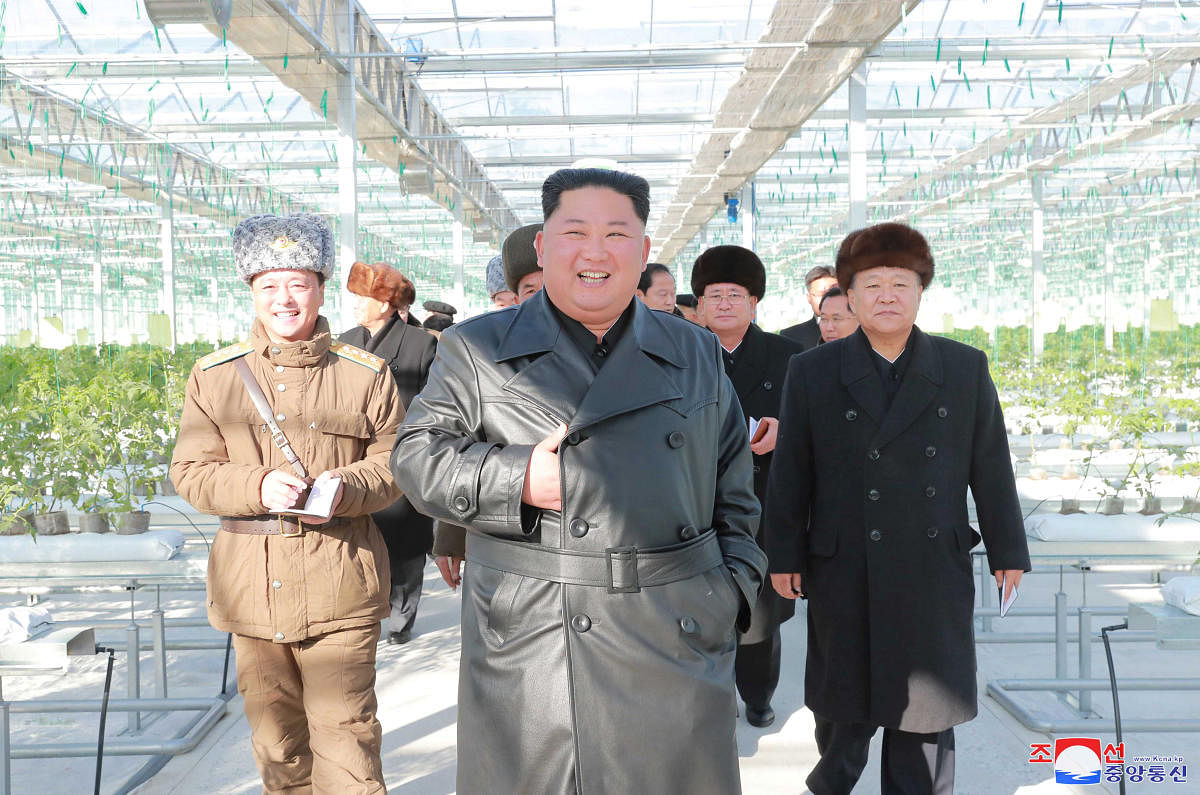
Satellite imagery captured before and after North Korea conducted what it called a "very important" test at its missile launch site suggested it had tested a rocket engine, experts said on Monday.
It was the latest of a series of weapons tests and statements from Pyongyang, as its year-end deadline for Washington to soften its stance in denuclearisation talks draws near.
State news agency KCNA said on Sunday the North had carried out the test at its Sohae satellite launching station, a rocket-testing ground that U.S. and South Korean officials once said Pyongyang had promised to shut down.
KCNA said the test results would help the North's strategic position, without elaborating on what was tried out, but the site has previously been used to send rockets and satellites into space.
Commercial satellite images taken on Saturday by Planet Labs showed vehicles and equipment likely to be used in a rocket engine experiment, while those captured on Sunday morning had signs of a conducted test, analyst Jeffrey Lewis said.
"Vehicles and objects appear on Dec. 7 to conduct the test," said Lewis, the director of the East Asia Nonproliferation Program at the Middlebury Institute of International Studies in California.
"They are mostly gone on Dec. 8, but the ground appears to have been disturbed by the exhaust from the test."
Asked on Monday if it had been an engine test, a spokeswoman of Seoul's defence ministry declined to confirm the suggestion, saying site monitoring and detailed analysis were underway with U.S. intelligence authorities.
North Korean leader Kim Jong Un has warned he may take a "new path" if the United States fails to address his demands.
He did not say what the path would be, but observers have said it might include the launch of a space satellite, which would help North Korea demonstrate progress in its rocket capabilities without returning to overt military provocations, such as firing an intercontinental ballistic missile (ICBM).
Some South Korean experts said North Korea may have tested a solid fuel rocket engine, which could allow it to field ICBMs that are easier to hide and faster to deploy.
"They may well have tried to see the thrust and duration of a solid-propellant rocket engine for ICBMs," a diplomatic source in Seoul told Reuters.
"That's effectively what they can do on the ground at this point without firing anything into the air."
Kim Dong-yub, a former South Korean Navy officer who teaches at Kyungnam University in Seoul, also said North Korea could have tested a solid-fuel engine as it has been striving to shift from liquid fuel.
North Korea appears to have used Soviet-era liquid propellants in all its ICBM or satellite launches in recent years, while developing solid fuel missiles to be fired from a submarine, officials and analysts say.
In March 2016, state media said Kim oversaw a "successful" test of a high-power solid-fuel rocket engine "designed and manufactured in the Korean style".
Kim also said the North's rocket industry had "firmly transitioned" to solid fuel from liquid propellants, while inspecting a newly developed missile based on a submarine-launched ballistic missile in February 2017.
"It could be solid fuel or they might have developed a new engine," said Jeong Han-beom, director of the Graduate School of National Security at Korea National Defense University.
"In any case, it's meant to improve their capabilities for ICBMs, which need to be tested several times, while sending a message to Washington that we might go back to those old days of military confrontation if negotiations fail."